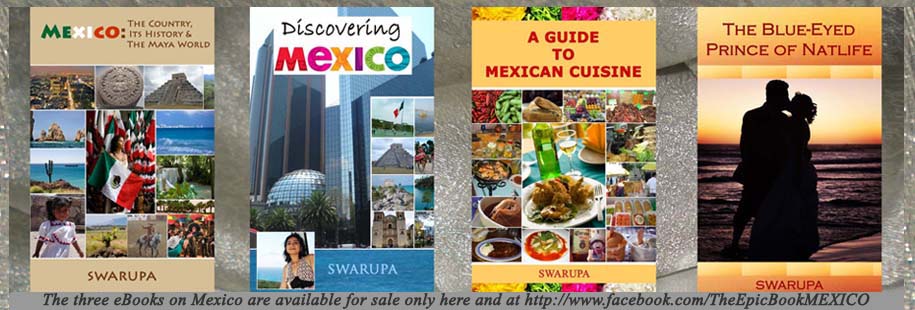Hey guys, hope you’re all doing great! Today, I’m sharing with you a bit about Guadalajara (gwah-dah-lah-ha-rah), the city where I lived in Mexico during 2007-2008. So here goes…
One of Mexico’s culture-rich states, the state of Jalisco (ha-leehs-koh) is famous for being the cradle of tequila, mariachi (mah-reeh-ah-chee) music — the emblem of Mexico’s cultural traditions, sombreros (sohm-breh-rohs), charreadas (chah-reeh-ah-dahs, the Mexican rodeos) and the jarabe tapatio (ha-rah-beh tah-pah-teeh-ohs, the Mexican Hat Dance). Jalisco’s biggest pride is its capital, Guadalajara which has bestowed upon the country most of the images which people worldwide associate with Mexico — like the famous wide-brimmed Mexican sombrero and mariachi music.
Located at an altitude of 5,000 feet, Guadalajara is the ‘most Mexican of all cities’ and embodies the soul of the country because of its rich, traditional culture and the typical Mexican ways of its people (called tapatios).
One of the wealthiest urban centres in Latin America, the city was a colonial centre of considerable religious, cultural and architectural importance. Today, it is a major hub for commerce and industry. Many hi-tech companies have made their presence in this city which is also called ‘the Silicon Valley of Mexico.’
Guadalajara’s surrounding areas boasts of well-known places. The famous town of Tequila, from where the world-famous tequila liquor originated is 65 km away from Guadalajara while the country’s largest freshwater lake and the second largest lake of Latin America, Lake Chapala is just 50 km away.
The Centro Histórico (sehn-troh eehs-toh-reeh-koh, the Historic Centre) or just Centro,attracts major tourist activity and is one of the most densely populated areas of the city. Still, most of the attractions lie within close range and it is a pleasure to walk around the area. One of the main landmarks of the area is the city Cathedral, known for its emblematic twin steeples. The surrounding plazas and parks provide plenty of opportunities for food, leisure, shopping and entertainment activities. The city’s main cultural arts venues, the monumental 19th-century building Teatro Degollado (teh-ah-troh deh-goh-yah-doh)and the impressive regional museum, Museo Regional de Guadalajara (mooh-seh-oh reh-hyoh-nahl deh gwah-dah-lah-ha-rah), are located here. So also, the UNESCO World Heritage Site of Instituto Cultural Cabañas (ihn-steeh-tuh-toh kuhl-tuh-rahl kah-bah-nyahs)and the beautiful 70,000 square metre Plaza Tapatia comprising of a central esplanade, plazas, narrow cobbled paths and beautiful works of art. Close by, in a small triangular plaza called the Plaza de Los Mariachis one can be serenaded by mariachi musicians while relaxing at one of the small cafés or restaurants.
Another popular zone in Guadalajara is the Minerva-Chapultepec area where an important city landmark is located — the Glorieta de La Minerva, a big statue of the Roman goddess Minerva surrounded by a large fountain.
You can read all about my life and experiences in Guadalajara in my travel book, “Discovering MEXICO”.
The following two images will surely convey to you the beauty of this charming city.
I’ll take your leave now but before that go ahead and enjoy this internationally famous Mexican song which is also one of the most popular romantic songs of all time – Besame Mucho
Have a great weekend 🙂



i was looking for similarities between Mexican and Indian foos. Since im plannin on traveling to India this year (hopefully).
I never thought i would find a blog about my country the way you describe it, i ve been reading a lot and i will continue reading some more, i can only say that you are correct about everything.
Greetings from Gdl
LikeLike
Hola Carlos 🙂 Muchas gracias por visitar mi blog y por tus comentarios muy amables. Espero que vengas a mi pais y tengas una experencia muy bonita. Muchos saludos hasta Guadalajara 🙂
LikeLike